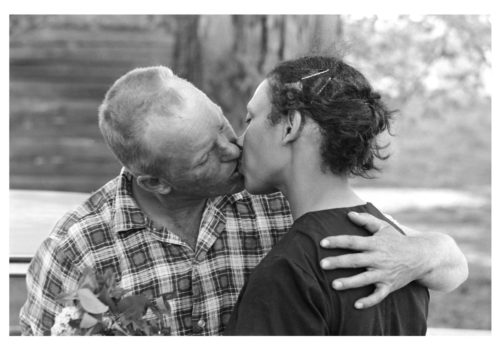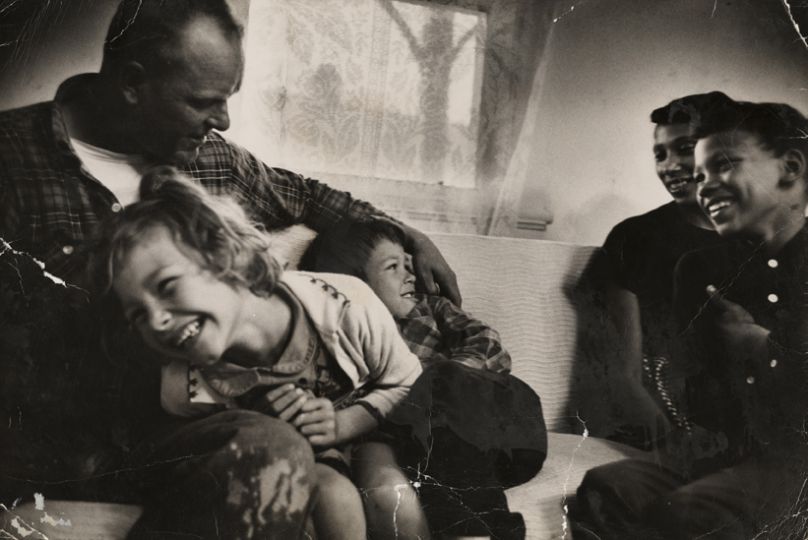The families of Richard Perry Loving and Mildred Delores Jeter had lived in Caroline County, Virginia for generations. Richard first met Mildred while listening to her brothers play music at the Jeters’ home. They dated for a few years before deciding to marry. Interracial marriage was illegal in Virginia and in twenty-five other states. For this reason, on June 2, 1958, Richard brought his bride-to-be to Washington, D.C., where there were no racial bans on marriage. Their civil rights case, Loving v. Virginia, went all the way to the Supreme Court, which in 1967 reaffirmed the very foundation of the right to marry. This exhibition features Grey Villet’s intimate images of an interracial couple, Richard and Mildred Loving, who married and then spent the next nine years fighting for the right to live as a family in their hometown.
Based on an anonymous tip that the Lovings were illegally living as married, sheriff Garnett Brooks and two deputies burst into the Lovings’ bedroom on July 11, 1958 at 2 a.m. When Richard explained that the woman in bed with him was his wife, Brooks replied, “Not here she’s not.” They were arrested for unlawful cohabitation and both pled not guilty. Richard only spent one night in jail while Mildred had to spend four; Richard was told that he would be put back in jail if he tried to bail out his wife.
In October 1958, the grand jury of the Circuit Court of Caroline County charged the Lovings with violating two sections of Virginia’s 1924 Racial Integrity Act. Because Richard was white and Mildred was African American and Native American, their marriage was illegal and a felony offence in Virginia.
On January 6, 1959, the Lovings pleaded guilty to the felony charge of miscegenation and Judge Leon M. Bazile sentenced them to one year in prison. The sentence was suspended if the Lovings agreed to be banished from Virginia for twenty-five years. On appeal, Bazile refused to set aside his original verdict, thereby propelling the Lovings’ case toward the U.S. Supreme Court, stating, “Almighty God created the races white, black, yellow, Malay, and red, and he placed them on separate continents. And but for the interference with his arrangement there would be no cause for such marriages. The fact that he separated the races shows that he did not intend for the races to mix.”
Banished from Virginia, the Lovings’ moved to Washington, D.C. In June 1963, Mildred wrote to Attorney General Robert Kennedy, asking if the new Civil Rights legislation would help her family return to Virginia. Kennedy responded that Mildred contact the American Civil Liberties Union, who had been actively pursuing anti-miscegenation test cases since the late 1950s. ACLU attorneys Bernard S. Cohen and Philip J. Hirschkop took the Lovings’ case, filing a brief in November 1964. The Loving v. Virginia decision delivered on June 12, 1967, found all miscegenation laws unconstitutional.
Grey Villet: The Lovings
November 1 to December 21, 2016
Monroe Gallery of Photography
112 Don Gaspar
Santa Fe, NM 87501
USA
This exhibition is presented as the feature film “Loving” opens on November 4, 2016. The movie, from acclaimed writer/director Jeff Nichols, stars Joel Edgerton and Ruth Negga in the roles of Richard and Mildred Loving. Watch the trailer below:

















